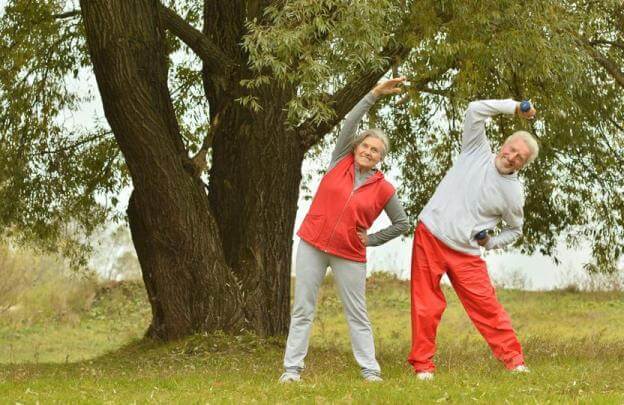Whether just walking around is a struggle, you find yourself in need of an electric mobility scooter or you’re wheelchair-bound, keeping fit and healthy with limited mobility can be a struggle. But what if we told you that it’s not as difficult as you might think? There are plenty of simple ways to keep fit and healthy with limited mobility, and we’ve pulled together just a few of them for you to consider.
Exercising
Cardiovascular
Cardiovascular exercises are a great way to keep you active and increase your heart rate. While walking, running and cycling are typical ways of getting you Cardio workout, if you have limited mobility you can adjust any of these to fit your needs. You can take a slow walk around your neighbourhood rather than go for a run, or cycle on a stationary bike if you can’t get out on a real bike. If neither of these sounds appealing, why not try a low-intensity water aerobics class? The water will act as a support and it can be disguise the exercise with fun! If you utilise a wheelchair, why not try an arm bike, or practice Zumba?
Scaled Strength Training
Strength training is often misconceived as being too dangerous and risky for elderly or frail people, but this kind of exercise can actually help you build up your strength and improve your overall balance to prevent slips and falls. However, it’s important to scale your strength training to what you can do and handle. Try and use a resistance band to strengthen your legs, and pick out the right band that you can handle. Weight training doesn’t have to be a standing activity. Try and lift dumbbells – light ones! – While sitting in your chair to increase upper body strength. Sit ups can also increase strength in your core, and can be made easier by the help of another person.
Flexibility
Increasing your range of motion and combatting soreness is important when you suffer with limited mobility and flexibility exercises can help you achieve this. Beginner’s yoga classes are a simple, easy way to help increase flexibility, and you can often take this at your own pace. Massaging your joints can also help to increase their mobility, and stretching your muscles daily will help you to optimise your flexibility exercises.
Healthy Eating
Foods
The food you eat will be your best chance at ensuring you get everything that you need. If you have not mobility, it’s important to count your calories, or ensure that you aren’t taking in too many. When your total energy output decreases, your calorie intake needs to come down too. Avoid sugary goods and fatty foods like red meat and full-fat cheese where you can. Instead, try and eat rices and pastas, ensure that you’re getting plenty of protein, and if you struggle to chew, soups and smoothies can be a tasty and effective way of getting everything that you need!
Vitamins
Vitamins often come with quite the debate on whether they’re worthwhile, but if you have limited mobility, a few vitamin supplements could actually benefit you. B Vitamins for example, including thiamine, folate, B6 and B12 can all be a struggle to keep balanced in your diet if you don’t have the mobility or time to cook the lean meats, poultry and fish that are rich in these vitamins. Nuts, fortified Orange Juice, Tuna or Salmon in ouches and pre-cooked meats can be a user-friendly, far easier way of getting these vitamins so it’s worth researching exactly what foods you can eat that contain the vitamins you need!
